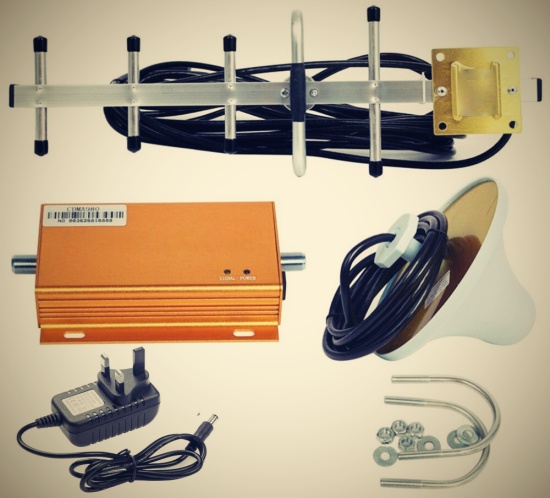Some Fulking properties that hug the base of the Downs suffer constant mobile phone connection problems indoors. Their location renders the signal weak and the masonry walls attenuate it further. This is mainly an issue for incoming calls (you can always use the landline for outgoing). The purpose of this post is simply to draw residents’ attention to the fact that (rather clunky) technical solutions to the problem are available, albeit at a price (both monetary and in terms of significant installation hassle).
One solution is very much analogous to the one adopted for wi-fi in the village hall (but wi-fi operates on different frequency bands). You put an aerial in a location where the phone signal is accessible (on the roof, in your loft, in an outbuilding, whatever) and then run a cable to a gizmo inside the house that is itself connected to a further aerial in a central location (the hall or the landing, say). Depending on the exact design, this second antenna may be directly connected to the gizmo or concealed within it.
Although at least one resident of The Street has successfully installed such a system recently, it is not a trivial enterprise. You, or someone acting on your behalf, will need to do some research. A good place to start is the relevant Ofcom webpage. Ofcom calls these gizmos ‘static mobile phone repeaters’ but that exact terminology, though entirely accurate, has not been widely adopted by those who make or sell the things. Words like ‘amplifier’ and ‘booster’ are also often used but not all devices thus described are actually repeaters (and a repeater is what you need). A significant problem with the Ofcom-approved products is that they will only operate on a single network at a time. If your household contains people who operate their phones on different networks, then you may have awkward decisions to make.
An alternative solution involves installing a device called a ‘femtocell’ that will transfer your mobile signal to your broadband connection. One household on The Street has had one of these installed for several years following their complaints to the carrier about reception. These devices are primarily intended for business users and are not widely available. Only one UK mobile network currently has them on offer. They require that you maintain a list of the phone numbers permitted to use it on your network’s website. Fine for you, but not too useful for the plumber fixing your dishwasher who is waiting to hear back as to the availability of the crucial replacement part.
Finally, some carriers offer ‘Wi-Fi Calling’. This essentially bypasses the local mobile network altogether and communicates directly via your broadband router. Despite the name, this facility can work for both incoming and outgoing calls. It does not solve the tradesman problem. In any event, you should probably contact your own mobile network provider fairly early in your research process to find out what they recommend by way of a solution to your signal problem. If they cannot offer one, then you may need to think about switching to a provider that can.

